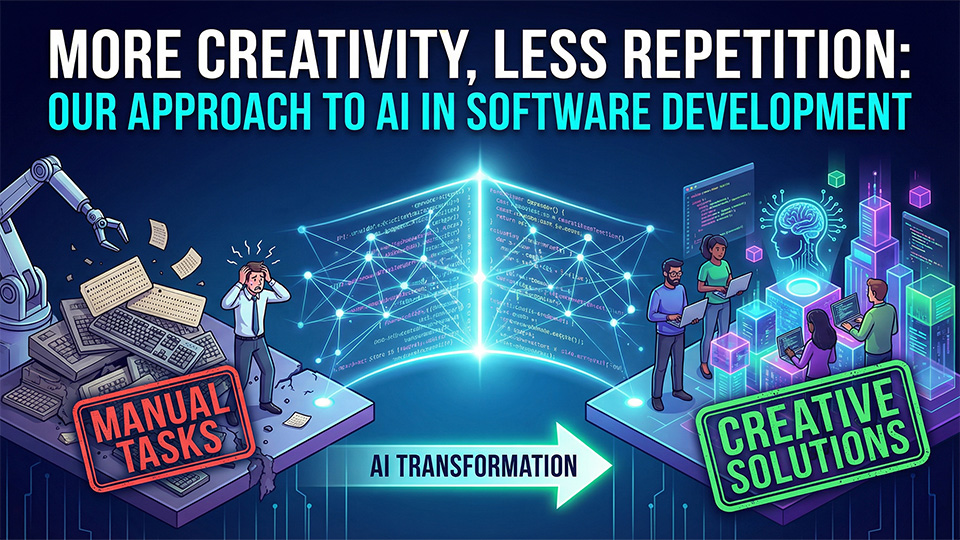September 22, 2022
Virtual vs Augmented Reality: What Differences?
Introduction
Augmented reality (AR) and virtual reality (VR) are often grouped together, but aren't they different? Furthermore, how are these new technologies affecting our daily lives? You might be surprised to learn that there is AR/VR all around you, and they continue to evolve to improve our lives immensely. This AR/VR guide breaks down all the definitions, differences, and applications for you.
What is virtual reality (VR)?
Virtual reality (VR) is a 3D computer-generated environment in which a person can explore and interact. Users will be able to immerse themselves in a virtual world which can be either a completely fictional world or a recreation of the real one. To achieve this, users put on a VR headset and sometimes couple it with controllers. The headset will completely block your surroundings and create illusions of depth to help you feel more immersed. Some even include sensors to track the user’s movements, heart rate, and other biometric data. While still in its early development stages, it has already made its way into different industries and proved to be a sophisticated technology that will continuously expand to play a bigger role in our lives.
Applications of virtual reality (VR)
There are many practical uses for virtual reality, from gaming to healthcare and more. Engineers and designers can use VR to create prototypes and dramatically cut costs in the automotive industry. In healthcare, medical professionals use VR to better prepare themselves for the operating room. They can use a headset to interact with medical devices and practice surgery on virtual bodies. With Metaverse, shopping is also changing for us, where shoppers can walk around a virtual world, go to stores, try on clothes, and more. Hugo Boss will participate in Metaverse Fashion Week in March 2022, where virtual catwalks, stores, and fitting rooms will be held. How cool is that! Other applications of VR are in tourism, real estate, architecture, interior design, training, and even gambling!

What is augmented reality (AR)?
Augmented reality (AR) adds virtual components to the real world, whether it’s an audio or visual element. The main purpose of AR is to enhance the user’s current perception of the real world, not completely replace it. An artificial layer is added with this technology and is now prevalent in our lives. AR is used in entertainment, business, and more.
Applications of augmented reality (AR)
Augmented reality is more accessible and widely used in our daily lives. In the military, it improves soldiers’ situational analysis, comms, battlefield navigation, and overall operational efficiency. If you don’t have a VR headset in fashion retail, you can still “try on” the clothes or accessories through a smartphone. AR can also help you create the most interactive and interesting business card that contains everything from your information, website, and portfolio. Can you imagine having the power to turn what you draw into a real being? Disney launched an augmented reality coloring book that will turn your 2D drawing into 3D. Other applications of AR include gaming, architecture, obstetrics, sports, and more.

What is the difference between VR and AR?
A good way to differentiate between VR and AR is by how much of the environment is computer-generated. In VR, that number goes up to 75%, while in AR - 25%. A key factor in differentiating the two is that AR augments the real world while VR completely immerses itself in a virtual environment.
Another difference is the level of control that users have over their presence in the real world. AR users can control their presence in the real world by choosing what information or content they want to overlay on their environment. VR users, on the other hand, are controlled by the system that creates the virtual environment for them.
The type of device that is required to access them is also different. VR requires a headset device that covers the eyes and blocks out any external stimuli. This device is connected to a computer or a console that runs the VR software. AR can be accessed with a smartphone or a tablet that has a camera and a screen.
Another difference is the impact that AR and VR have on both the virtual and real worlds. AR enhances both the virtual and real world by adding information, graphics, or animations that can enrich the user's experience. VR only enhances a fictional reality that is created by the system.
VR and AR lead the way to Metaverse
One of the most ambitious and visionary goals of VR/AR is to create a metaverse, a shared virtual space that connects multiple platforms and devices, and allows users to interact with each other and with digital content in a seamless and realistic way. The metaverse is not just a single virtual world, but a network of interconnected worlds that can host different activities, events, and communities. The metaverse is also not limited to VR/AR devices, but can be accessed through other mediums, such as web browsers, smartphones, and smart glasses.
The idea of the metaverse has not yet been fully realized, although there are some indications that it is moving in that direction. For instance, Facebook recently declared that it would change its name to Meta, a corporation that aspires to create the metaverse and make it available to billions of people. Meta intends to invest in content development, research, and collaborations with other businesses and organizations in addition to creating new VR/AR hardware and software, such as the Oculus Quest 2 headset and the Horizon Worlds social platform. Users will be able to design their own avatars, identities, and experiences in the metaverse, as well as own digital assets that can be moved between other platforms.
Microsoft's Mesh, a cloud-based platform that enables users to collaborate and communicate in mixed reality, is another illustration of a metaverse endeavor. Regardless of their actual location or device, Mesh enables users to participate in holographic meetings, share 3D material, and collaborate in real-time. Mesh is compatible with a number of other Microsoft products, including Teams, Dynamics 365, and Azure. Microsoft expects Mesh to open up fresh opportunities for productivity and social interaction in the metaverse.
These are just some of the examples of how VR/AR is leading the way to the metaverse. As VR/AR technology becomes more advanced, affordable, and accessible, more users will be able to join the metaverse and experience its benefits and challenges. The metaverse is not only a technological innovation, but also a cultural and social phenomenon that will shape the future of human communication and creativity.
Other realities: MR and XR
VR and AR are the more popular realities, but what do mixed reality (MR) and extended reality (XR) mean? Simply put, mixed reality is a combination of both AR and VR. It seamlessly blends the real and virtual worlds and allows users to interact with virtual objects as they would in the real world. All of these technologies are different. Users in VR experience an entirely virtual environment, while AR just adds virtual elements to the real world. Mixed reality helps users interact with both the virtual and real-world environments simultaneously. Extended reality (XR) is an umbrella term that includes virtual reality, augmented reality, and mixed reality.
Conclusion
Now that you’ve learned the differences between VR/AR and their importance in improving business operations and users’ lives, you might want to implement these technologies in your organization. If so, contact Dirox now to cut prototyping costs, train employees faster, minimize human errors, and much more. We are a software development firm with an enthusiastic team and years of experience building a custom VR/AR application that caters to your business needs. Get in touch with us today!






























.svg)













